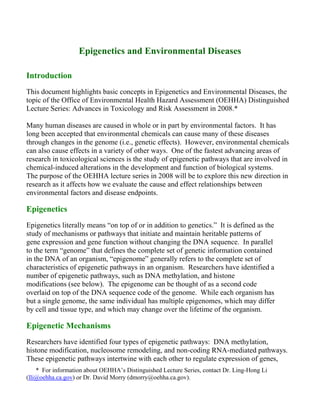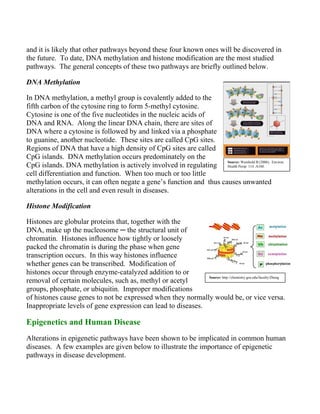The document discusses epigenetics and its role in environmental diseases. It defines epigenetics as mechanisms that regulate gene expression without changing DNA sequence. Environmental factors can cause epigenetic changes through pathways like DNA methylation and histone modification. Abnormal epigenetic changes have been implicated in diseases like cancer, aging, and neurodevelopmental disorders. Certain environmental exposures are also linked to epigenetic alterations, though causal relationships are difficult to establish.



